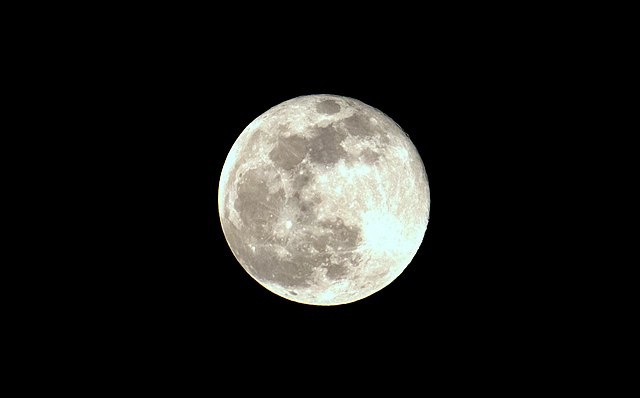Supermoons are billed as the year's largest and brightest full moon. But how huge are they, and how often do they appear in the night sky?

Rare Moons
Blue moons have sparked not only the imagination of people worldwide but also inspired music and pop culture. Similarly, red moons have piqued the imagination of astronomers and sparked catastrophic speculation throughout history. Furthermore, monthly regular full moons pique the public's interest thanks to memorable titles such as the Harvest Moon. In recent years, however, one lunar moniker has risen above the rest in terms of popular attention and has become a viral hit.
Full Moons
Full moons appear in the night sky once a month when the sun illuminates the whole Earth-facing side of the moon. The only exception to this rule is when the lunar calendar and the Julian calendar fully match so that no full moon rises in February, the shortest month of the year. According to Sky and Telescope, this happens four times every century.
However, not all full moons are made equal. In the spectacle known as a supermoon, some look larger and brighter than others.
The moon circles the Earth in an uneven ellipse, with moments when it is closer to the planet, known as perigee, and times when it is further away, known as apogee.
When a full moon falls around perigee, it looks significantly larger and brighter than usual, resulting in the viral phenomenon known as a supermoon. On the other hand, when a full moon occurs around apogee, it is not as brilliant and looks significantly smaller, a phenomenon known as a micromoon.
Read also: Summer Sky Watch: Milky Way to Act as a Beautiful Backdrop During July's Astronomical Event
Sparking Interest
Supermoons have recently sparked interest in popular culture, but the phrase has been used for decades. The word was invented by astrologer Richard Nolle in Horoscope Magazine in 1979 to describe this event, but it did not catch on until the age of modern media.
A supermoon is an astronomical phenomenon that viewers who are uninformed of what is going on in the sky may go unnoticed. At first view, it appears almost identical to previous full moons. Side-by-side photos, on the other hand, illustrate their apparent size change.
According to NASA, supermoons can look up to 14 percent bigger and 30 percent brighter than micromoons.
"A supermoon may be difficult to see visually, but it has an effect on Earth," NASA noted. "Because the Moon is close to Earth, greater tides may occur than normal."
Another element at work that might cause a full moon to look bigger in the sky is known as the moon illusion.
Whether a full moon is a supermoon or not, an optical illusion causes the moon to look larger than it does later in the night when it is high in the sky.
Taking Pictures
"Photographs show that the Moon is the same breadth near the horizon as it is when it is high in the sky, but that is not what human eyes sense," NASA noted. "As a result, it's an illusion based on how our brains absorb visual information."
Some of the greatest times to picture Earth's cosmic partner are when the moon is just above the horizon. Not only does the optical illusion magnify the moon, but there are frequently items in the foreground such as buildings, trees, or mountains that may add to the attractiveness of a photograph.
Related Article : Remnants of a Comet that Exploded in 2007 Will Reach the Earth
For more Space news, don't forget to follow Nature World News!
© 2025 NatureWorldNews.com All rights reserved. Do not reproduce without permission.





